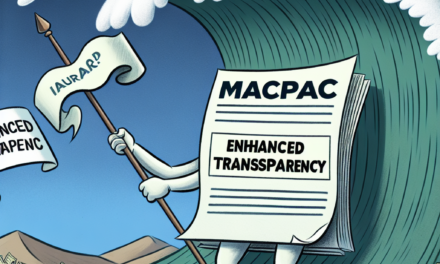J&J Strengthens US Manufacturing Amidst Pharma Reshoring Trends
In recent years, the pharmaceutical industry has witnessed a significant shift towards reshoring, with many companies, including Johnson & Johnson (J&J), taking proactive steps to bolster their manufacturing capabilities within the United States. This trend is driven by various factors, including supply chain vulnerabilities exposed by the COVID-19 pandemic, increasing regulatory pressures, and a growing demand for domestic production. This article delves into the multifaceted aspects of J&J’s commitment to strengthening US manufacturing, exploring the implications of this trend for the pharmaceutical sector and the broader economy.
1. The Reshoring Movement: An Overview
The reshoring movement refers to the trend of bringing manufacturing operations back to the home country from overseas locations. In the pharmaceutical sector, this movement has gained momentum due to several critical factors:
- Supply Chain Vulnerabilities: The COVID-19 pandemic exposed significant weaknesses in global supply chains, leading to shortages of essential medicines and medical supplies.
- Regulatory Compliance: Increasing regulatory scrutiny has made it more challenging for companies to manage overseas production while ensuring compliance with safety and quality standards.
- Consumer Demand: There is a growing preference among consumers for domestically produced products, particularly in the wake of the pandemic.
- Technological Advancements: Innovations in manufacturing technologies, such as automation and digitalization, have made domestic production more viable and cost-effective.
- Government Incentives: Various federal and state initiatives are encouraging companies to invest in domestic manufacturing through tax breaks and grants.
As a leading player in the pharmaceutical industry, J&J has recognized the importance of reshoring and has taken significant steps to enhance its manufacturing footprint in the United States. This commitment not only strengthens the company’s supply chain resilience but also contributes to job creation and economic growth.
2. J&J’s Strategic Investments in US Manufacturing
Johnson & Johnson has made substantial investments in its US manufacturing capabilities, reflecting its commitment to reshoring. The company has announced plans to invest over $1 billion in its manufacturing facilities across the country. This investment is aimed at expanding production capacity, enhancing technological capabilities, and improving overall efficiency.
One notable example of J&J’s investment is its facility in Fort Washington, Pennsylvania, which has undergone significant upgrades to support the production of biologics and vaccines. This facility played a crucial role in the development and manufacturing of the COVID-19 vaccine, showcasing J&J’s ability to respond rapidly to public health needs.
Additionally, J&J has established a new manufacturing site in the state of Ohio, which is expected to create thousands of jobs and contribute to the local economy. This facility will focus on producing over-the-counter products, further diversifying J&J’s manufacturing capabilities in the US.
These strategic investments are not only about increasing production capacity; they also emphasize the importance of advanced manufacturing technologies. J&J is leveraging automation, artificial intelligence, and data analytics to optimize its manufacturing processes, reduce costs, and improve product quality. By embracing Industry 4.0 principles, J&J is positioning itself as a leader in modern pharmaceutical manufacturing.
3. The Economic Impact of J&J’s Manufacturing Expansion
The expansion of J&J’s manufacturing operations in the United States has far-reaching economic implications. By investing in domestic production, J&J is contributing to job creation, economic growth, and community development.
According to a report by the National Association of Manufacturers, every manufacturing job supports an average of 3.4 additional jobs in the economy. Therefore, J&J’s investment in new manufacturing facilities is expected to create thousands of direct and indirect jobs. This job creation is particularly significant in regions that have faced economic challenges due to the decline of traditional manufacturing industries.
Moreover, J&J’s commitment to US manufacturing can stimulate local economies by increasing demand for goods and services. Local suppliers, service providers, and contractors will benefit from J&J’s operations, leading to a multiplier effect that enhances overall economic activity.
Furthermore, the focus on domestic production aligns with the broader trend of “Buy American,” which encourages consumers and businesses to prioritize products made in the United States. This shift can lead to increased consumer confidence and loyalty, ultimately benefiting companies like J&J that prioritize local manufacturing.
4. Challenges and Considerations in Reshoring
While the reshoring movement presents numerous opportunities, it also comes with its own set of challenges. J&J, like many other companies, must navigate these challenges to ensure the success of its US manufacturing initiatives.
- Labor Shortages: The manufacturing sector is currently facing a labor shortage, with many skilled workers retiring and fewer young people entering the field. J&J must invest in workforce development and training programs to attract and retain talent.
- Cost Competitiveness: Manufacturing in the US can be more expensive than overseas production due to higher labor costs and regulatory compliance expenses. J&J must find ways to enhance efficiency and reduce costs to remain competitive.
- Supply Chain Disruptions: While reshoring can mitigate some supply chain risks, companies must still contend with potential disruptions caused by natural disasters, geopolitical tensions, or other unforeseen events.
- Regulatory Compliance: Navigating the complex regulatory landscape in the US can be challenging. J&J must ensure that its manufacturing processes comply with stringent FDA regulations and other industry standards.
- Technological Integration: Implementing advanced manufacturing technologies requires significant investment and expertise. J&J must ensure that its workforce is adequately trained to leverage these technologies effectively.
Despite these challenges, J&J remains committed to overcoming obstacles and enhancing its US manufacturing capabilities. The company recognizes that investing in domestic production is essential for long-term sustainability and resilience in an increasingly complex global landscape.
5. The Future of US Pharmaceutical Manufacturing
The future of pharmaceutical manufacturing in the United States is poised for transformation, driven by trends such as reshoring, technological advancements, and changing consumer preferences. J&J’s commitment to strengthening its US manufacturing capabilities is a testament to the potential for growth and innovation in this sector.
As more companies follow J&J’s lead, we can expect to see a resurgence of domestic manufacturing in the pharmaceutical industry. This shift will not only enhance supply chain resilience but also foster collaboration between industry stakeholders, including government agencies, educational institutions, and private companies.
Moreover, the integration of advanced technologies will play a crucial role in shaping the future of pharmaceutical manufacturing. Companies that embrace automation, artificial intelligence, and data analytics will be better positioned to optimize their operations, improve product quality, and respond to market demands swiftly.
In addition, the focus on sustainability and environmental responsibility will become increasingly important. As consumers become more conscious of the environmental impact of their choices, pharmaceutical companies will need to adopt sustainable manufacturing practices to meet these expectations.
Ultimately, J&J’s efforts to strengthen US manufacturing amidst reshoring trends reflect a broader commitment to innovation, quality, and community engagement. By investing in domestic production, J&J is not only enhancing its own competitiveness but also contributing to the revitalization of the US manufacturing sector as a whole.
Conclusion
In conclusion, Johnson & Johnson’s commitment to strengthening US manufacturing amidst the reshoring trends in the pharmaceutical industry is a multifaceted initiative that holds significant implications for the company, the economy, and the broader healthcare landscape. Through strategic investments, J&J is enhancing its production capabilities, creating jobs, and contributing to local economies while navigating the challenges associated with reshoring.
The reshoring movement is not merely a response to recent global events; it represents a fundamental shift in how pharmaceutical companies approach manufacturing. As J&J continues to lead the way in this transformation, it sets a precedent for other companies to follow, ultimately fostering a more resilient and innovative pharmaceutical sector in the United States.
As we look to the future, the lessons learned from J&J’s initiatives will be invaluable for other companies seeking to strengthen their domestic manufacturing capabilities. By prioritizing local production, embracing advanced technologies, and fostering collaboration across the industry, the pharmaceutical sector can emerge stronger and more capable of meeting the challenges of tomorrow.




